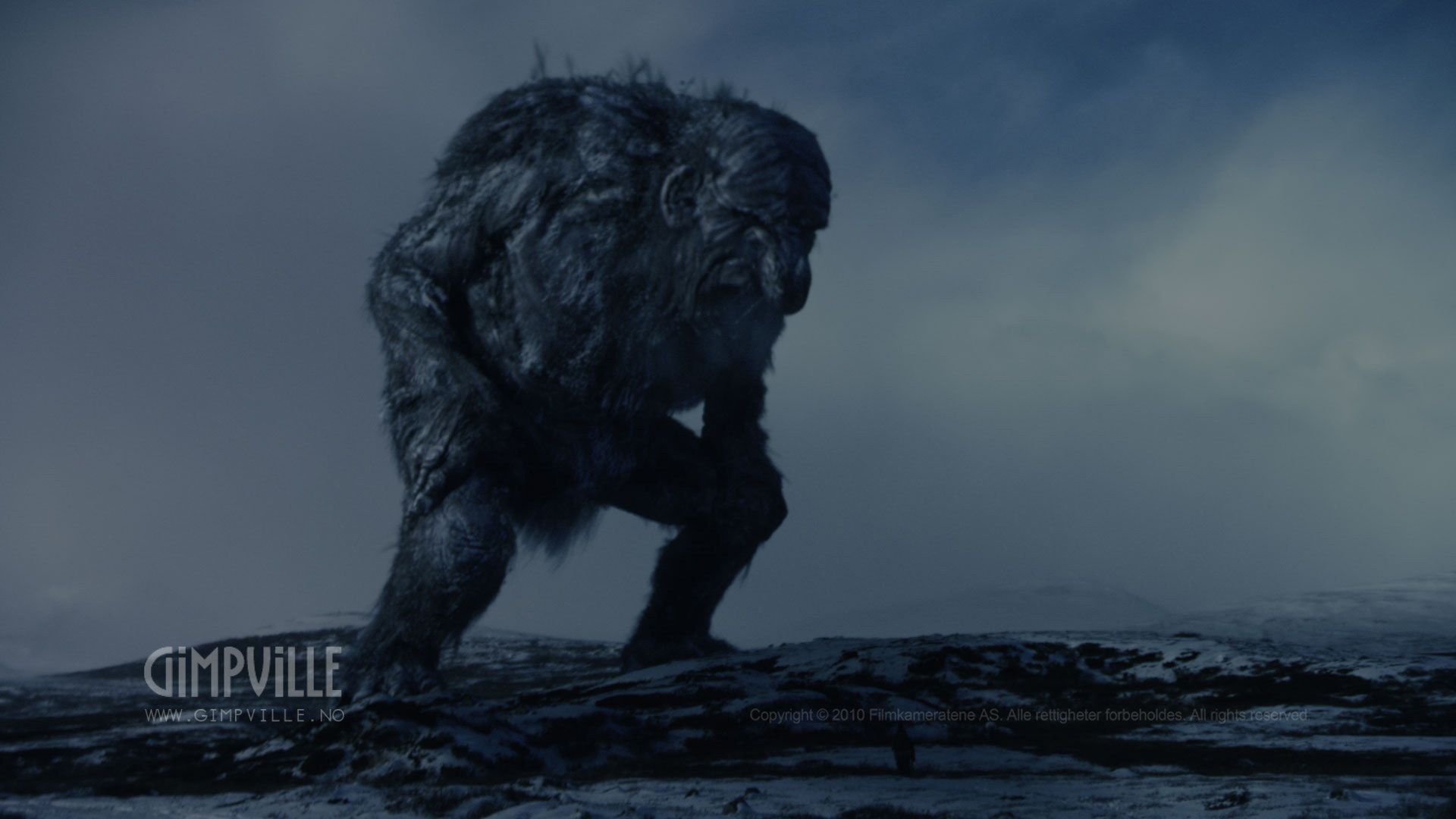Troll Hunter brings together two of Norway's most prominent VFX studios, Storm Studios and Gimpville to help create the country’s first ever creature film. This mocumentary thriller follows a team of truth-seekers who venture into Norway's wilderness determined to expose a troll-sized government cover-up.
It is exciting to see an international film tackle an effects-heavy movie with such style. Both studios relied on Houdini to bring this film to life. The studios used Houdini to create natural elements that integrated with the environment; to create effects where the trolls turn to stone; to add fur to the trolls and more.
STORM STUDIOS
Storm Studios was established in 1996 and is involved in projects ranging from commercials to feature films. They are a visual effects shop that uses Houdini for most of their effects work including Troll Hunter.
One of Storm Studios’ tasks in this film was to integrate the troll creatures into their natural wooded environment. In one scene, a three-headed troll parts a pair of evergreens as it emerges from the woods. Storm utilized Houdini's L-Systems to create the trees. The main branches of the trees were simulated with Houdini’s wire solver for the deforming branches. A particle system was then used to simulate debris falling from the trees as the troll moves through them.
“This is the first time where we see a troll in the movie and we had to make it impressive” explains Magnus Pettersson, Effects TD at Storm Studios.
The troll creatures are nocturnal, avoiding daylight which will turn them into stone. A system of surface operators was set up in Houdini to create the solidification effect which ran from head to toe as the troll was exposed to light.
“The procedural nature of Houdini made it possible for us to get a fast pre-visualization of the effect then tweak the results whenever the animation of the shot changed” says Petterson.
GIMPVILLE
Gimpville opened their doors in 2002 as a two-man operation but quickly expanded as the projects rolled in. Today, they focus exclusively on visual effects and 3D graphics. For Troll Hunter, Gimpville's schedule was extremely tight and they needed to jump straight into production with limited time for research and development.
Adding Detail to the JotneGimpville worked extensively on the sequence of shots involving the giant-sized Jotne troll. The giant-sized Jotne was covered in fur with snowy patches spread across its coat. It even had some vegetation sprouting from its surface.

The impact debris created for the Jotne chase sequence was based on the emission geometry of the snow, and ended up being several particle systems where one system was fine spray with millions of particles, and one was heavy pieces from around and beneath the feet with instanced random geometry that interacted with the ground and the Jotne. The particle motion was primarily noise-based.
For the atmospheric snow, the artists set up a noisy particle system that matched the plates and filled the volume between the Jotne and the camera. Due to the sheer scale of the shots, some shots contained several million snowflakes.
“Due to the flexible nature of Houdini we were able to re-use the majority of our effect tools and dynamic solutions” comments Gimpville Technical Director Christian Korhonen. “This saved us a lot of time and allowed us to make each effect look good in one shot then populate this to the other shots without spending a lot of time tweaking and adjusting the effect. It also gave our Houdini artists an easy way to share settings and utilities seamlessly between the shots, which reduced the overall project overhead.”
Rendering & Lighting
Gimpville had known right from the beginning that Mantra would be required for this particular production. “Mantra is the big Houdini feature here at Gimpville” says Christian Korhonen, Effects Technical Director at Gimpville. “Having unlimited render tokens with a Houdini license is a big deal for a small studio.” The footage that was shot on location had very soft lighting conditions. To get a detailed ambient, they used Houdini's environment light in combination with an HDRI map and a spotlight.
“It was a very brute force approach using ray tracing for almost everything. But it proved to be a very efficient way to get good lighting in no time” remarks Gimpville Effects Technical Director Ole Geir Eidsheim. The team at Gimpville was also able to make excellent use of sub-surface scattering using a tool that was posted in the Houdini Forums. They added layers of dirt and specular on top of the sub-surface scattering. Outputting all the different elements into 15 different passes gave them a great amount of control when it came to working with different elements in Nuke.
In Conclusion
The combined efforts of Storm Studios and Gimpville have helped Norway produce its first creature film at a high level of realism. This is only the beginning as the Norwegian film industry is still on the rise and capably supported by a very talented group of home-grown studios and artists.
COMMENTS
Please log in to leave a comment.